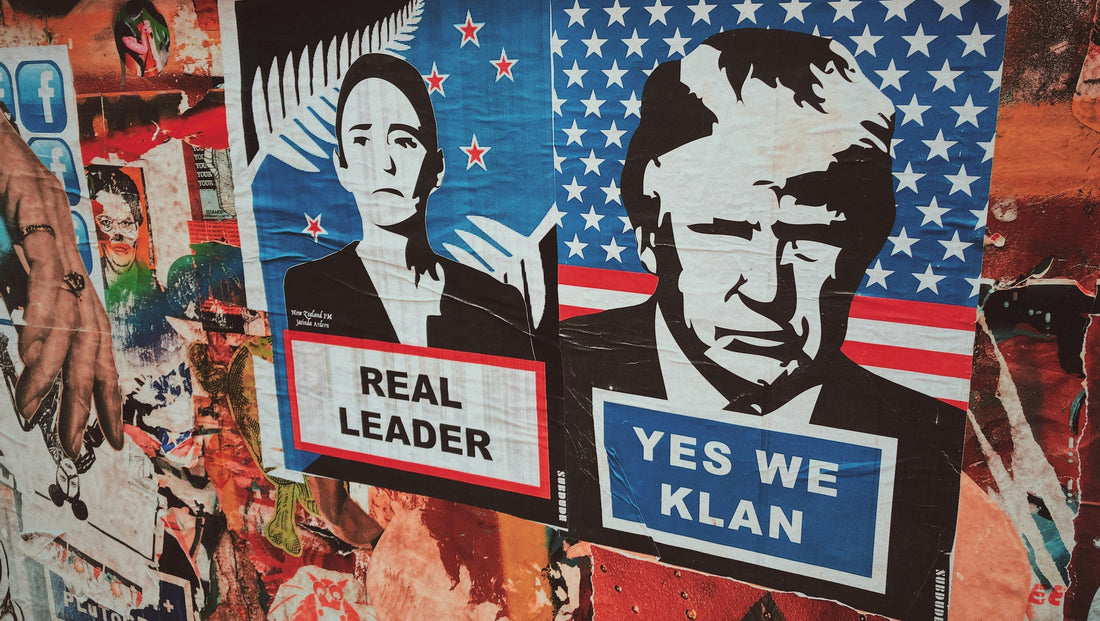
Abstract Art as a Mirror of Social Unrest
Share
The Power of Abstraction in Times of Turmoil
Abstract art is more than color, shape, or form—it is a language of feeling, a response to the world that exists beyond words. In times of social unrest, abstraction becomes a powerful tool for documenting change, expressing protest, and capturing the emotional weight of history.
For me, abstraction is about the spaces between—the unseen, the unspoken. It carries the weight of history, the subtle shifts in power, and the quiet moments of resilience. I’m not always shouting; sometimes, the most powerful commentary is a whisper. A feeling. Through color and form, I explore the interior landscape of the Black experience, allowing emotion to guide the composition.
In today’s climate, contemporary abstract expressionism is at a crossroads. As political divisions deepen, art institutions struggle with what should be exhibited, censored, or embraced. What role does abstraction play in social movements today? How do we navigate an art world that both welcomes and resists political narratives?
The Political Legacy of Contemporary Abstract Expressionism
Abstract expressionism has long been linked to political and social movements. While some associate it with postwar individualism, many artists have used abstraction as a subtle but powerful form of resistance.
Historical Context: Abstraction as a Form of Resistance
From mid-century modernists to today’s contemporary voices, abstract artists have consistently used their work to engage with cultural, racial, and political tensions in ways that are not always explicit but are deeply felt.
- Norman Lewis (1909–1979) transformed abstraction into a space of quiet resistance, layering movement and depth into his compositions to reflect the Civil Rights Movement.
- Alma Thomas (1891–1978) rejected narratives of oppression and instead used vibrant color fields as an act of radical joy and resilience.
- Felipe Baeza (b. 1987) embeds themes of migration and erasure into his layered, textured abstractions, making the personal political through form and composition.
Today, artists like Gerhard Richter, Mark Bradford, and Kara Walker continue this tradition, shaping modern abstract art meaning through social critique. Bradford’s torn, layered surfaces evoke histories built and broken. Walker abstracts racial violence into haunting silhouettes, making what is absent just as powerful as what is present.
Image: Kara Walker
These artists reinforce an essential truth—abstraction is not an escape from reality, but a confrontation with it.
The Long Game of Abstraction: Why It Endures as Protest
There has always been a debate—is abstraction as effective as representational protest art? Some say direct imagery is stronger, that people need to see faces, fists, and moments frozen in time. But abstraction plays the long game.
For me, abstraction is the undercurrent, the emotional residue. Representation captures a moment—a single image that tells a clear story. But abstraction lingers. It makes people sit in discomfort, in uncertainty, in the unknown.
As a Black artist, my goal is not just to make people see—I want them to feel. To sit in that space of emotion, tension, and unspoken history. This is why political abstract expressionism remains vital—it forces engagement without offering easy answers.
How Art Institutions Are Navigating Political Abstraction
Museums and galleries have always been gatekeepers of culture, shaping what is seen and how it is interpreted. Today, socially engaged abstract art is caught between public demand and institutional hesitation.
The Challenge of Political Neutrality in Art Institutions
Many institutions claim to support progressive, political, and experimental art, but behind the scenes, curatorial decisions are shaped by funding, politics, and fear of backlash.
- Institutions like the Whitney Museum and Tate Modern have exhibited politically engaged abstraction but often face pressure from donors and audiences with conflicting views.
- Some exhibitions featuring politically charged abstraction have been quietly postponed or altered to avoid controversy.
- Sam Gilliam’s retrospective faced delays, with speculation that institutions were reluctant to embrace its racial and historical themes.
I’ve seen galleries become hesitant to exhibit work that feels too unresolved, too charged. It’s as if abstraction is fine until it starts to reveal too much. But isn’t that the point?
The Rise of Independent & Artist-Led Spaces
When institutions hesitate, artists create their own spaces. Independent galleries, artist-run collectives, and pop-up exhibitions have become critical for politically engaged abstract work. These spaces exist without the constraints of institutional censorship, allowing work to be shown in its full complexity.
Some of the spaces leading this charge include:
- Theaster Gates’ Rebuild Foundation (Chicago) – A reimagination of what an art space can be, fusing activism, history, and community engagement.
- For Freedoms Collective – A platform blending abstraction and political discourse to engage communities in civic action.
I see these spaces as necessary extensions of abstract protest. They prove that artists will always find a way to create, share, and disrupt, regardless of institutional hesitation.
Conclusion: The Future of Abstract Art in a Divided Society
Looking ahead, I believe abstract art will continue to evolve as a tool for social commentary. As long as unrest exists, abstraction will serve as a response—a visual language that carries the weight of our time.
I know abstraction will remain politically engaged because it has to be. It’s not about chasing headlines or trends—it’s about documenting the emotional undercurrents of history. Whether in a museum, an independent space, or on a city wall, abstract art will continue to push the boundaries of what is seen, what is felt, and what is left unsaid.
Sidney Woodruff

